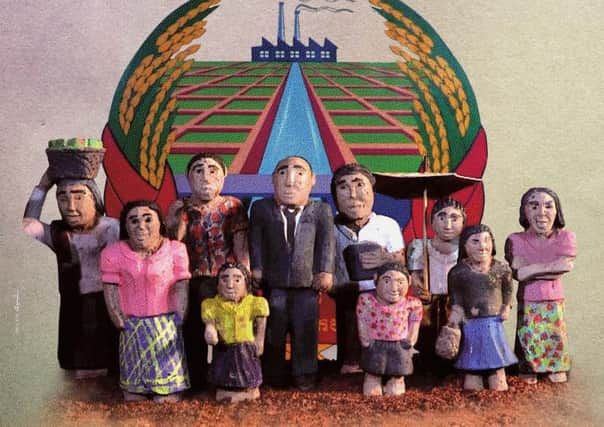Film review: The Missing Picture


It’s not the first time that film-maker Rithy Panh has tackled the horrors orchestrated by Pol Pot, but his latest movie is infinitely more personal and groundbreaking than the relatively straightforward ‘Rice People’ and ‘S-21: The Khmer Rouge Killing Machine’.
This is Panh’s own tale of surviving the cruel 1970s regime, as well as a story which lays bare the power of film as a tool of both propaganda and truth.
Advertisement
Hide AdAdvertisement
Hide AdThe unlikely method of storytelling is a series of lovingly-carved clay figures enclosed in detailed dioramas which recreate everything from the Cambodian jungle to the Khmer Rouge’s makeshift hospitals.
Pre-revolution the figures are rounded and smiling but the artist’s scalpel soon cuts deep ridges to reveal corrigated ribcages of starvation.
As the hated bourgeoisie are ejected from their homes and set to work in rice fields the faces become ever more desperate and haunted.
These static scenes provide the ‘missing pictures’ which were concealed from the world by Pol Pot and his cronies in an attempt to portray a communist utopia.
Advertisement
Hide AdAdvertisement
Hide AdThey also act as therapy for Panh, revealing the ‘missing pictures’ erased from his own mind to preserve his fragile sanity - those of all the family and friends he lost to famine, war and disease.
The film-maker’s camera pans and swoops around the homemade landscapes, while interspersed archive film, newsreel and propaganda from the period adds depth and movement.
Occasionally a collage of the the two provide some of the film’s most arresting images, all the while backed by Panh’s detached commentary.
Despite it being a resolutely political work, there’s no real conclusions or epiphanies here; just a stark and balanced reminder of the horrors of the past.
Advertisement
Hide AdAdvertisement
Hide AdPanh bravely even refuses to completely condemn the Khmer Rouge, making it clear that the previous regime were also fatally flawed - creating the perfect conditions for such a revolution to flourish.
It’s a film that deserves the widest audience possible - particularly in these times where political spin and subterfuge so often threaten to obscure the truth.